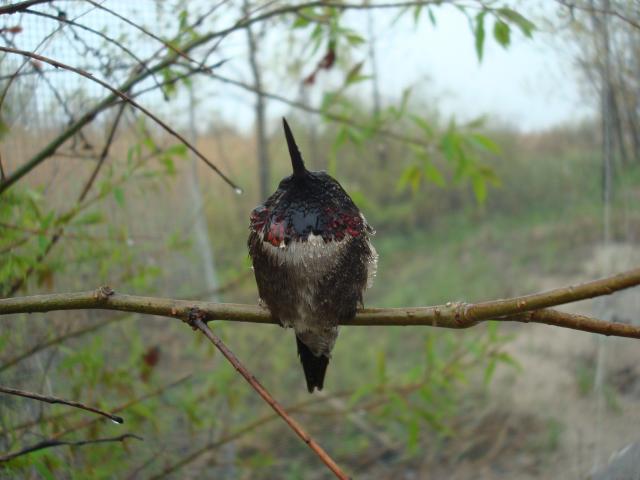Posted 01/16/14
Extreme weather events are expected to increase in the future. These extreme events could interfere with the nesting success of passerines. Single extreme events might not have long-term consequences, but several events within a breeding season, or one event lasting the entire breeding season, could result in population-level declines. Ana Maria is using banding data from the Monitoring Avian Productivity and Survivorship (MAPS) program to look for relationships between extreme weather event and reproduction success in the northeastern North America.

Global climate change is expected to result in an increased incidence of extreme weather events, such as heat waves, cold snaps, and droughts. When these events occur during the late spring and early summer, the peak breeding season for many birds in the United States, they can have detrimental effects on the reproductive success of many bird species. Ana Maria Venegas, a Master’s student with the SILVIS Lab is investigating how extreme events can affect bird reproduction.’A spring snow storm or ice storm (figure 1) can make adult birds abandon their nest in order to be able to survive through the event’, suggests Ana Maria. However, a single event might not cause a population-level decline. Many species of birds will re-nest once conditions improve, and might successfully rear several broods within a breeding season. These successful nests will help balance out the losses from earlier in the breeding season.

Population might suffer when that late storm is accompanied by other severe weather in the same breeding season. A drought might limit food supply needed to successfully raise the young of a nest, and result in another nest failure. A wind storm or heavy precipitation might knock a nest out of a tree, or flood a nest on the ground. ‘Reproduction is a key feature in maintaining a population. If a species cannot successfully raise young in a year, there could be population-level consequences’ said Ana Maria.Ana Maria is using data from MAPS, a constant-effort mist-netting (figure 2) program with stations throughout the United States and Canada. She is using data from 94 MAPS stations in Maine, New Hampshire, Vermont, New York, Massachusetts, Rhode Island, Connecticut, and Pennsylvania. The stations provide data on the species, age, and sex of each bird caught (figure 3). What Ana Maria is using for per project is the proportion of juveniles caught for ten common species. ‘[This] provides an index for the number of juveniles produced in a year per adult’, said Ana Maria. When the proportion is small, there are few juveniles that fledged, suggesting that there something happened to affect reproductive output.

Ana Maria will look for relationships between this proportion and the weather patterns during the breeding season. She will use weather data from two months, June and July, which are the peak of the breeding season in the region. She will calculate the correlations between maximum and minimum temperature, amount of precipitation, and precipitation deficit to the proportion of juveniles caught. “
Story by Max Henschell
